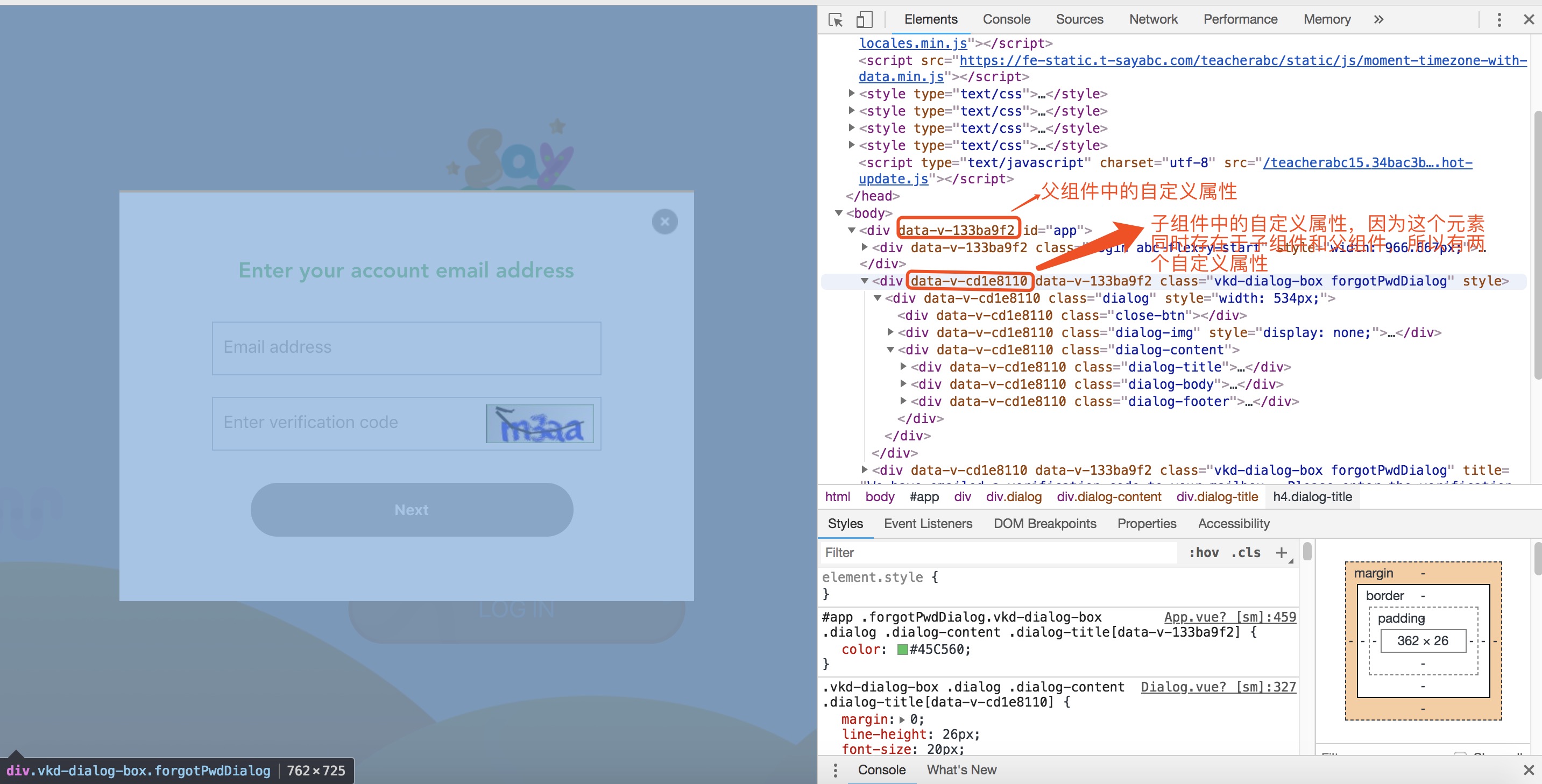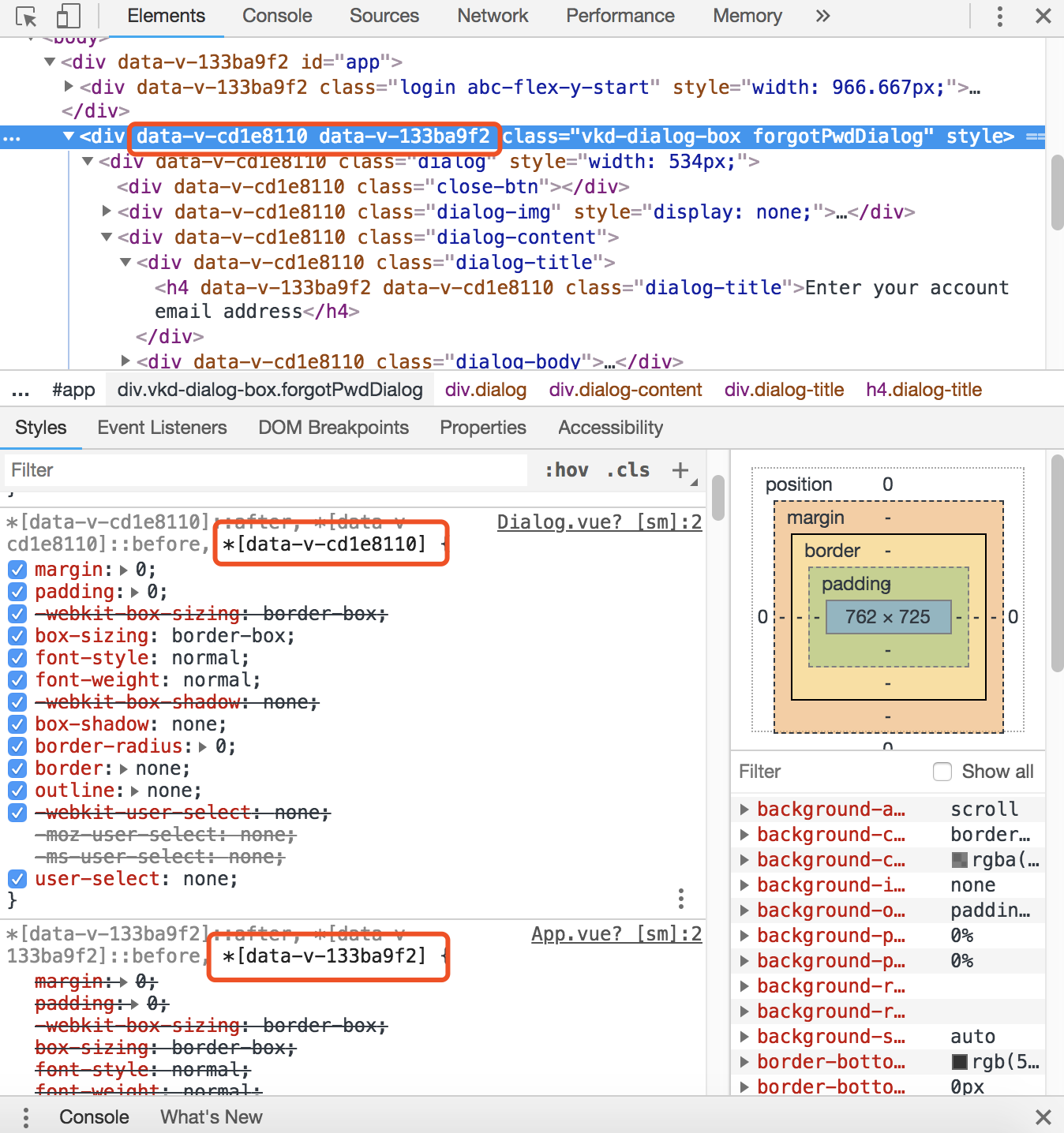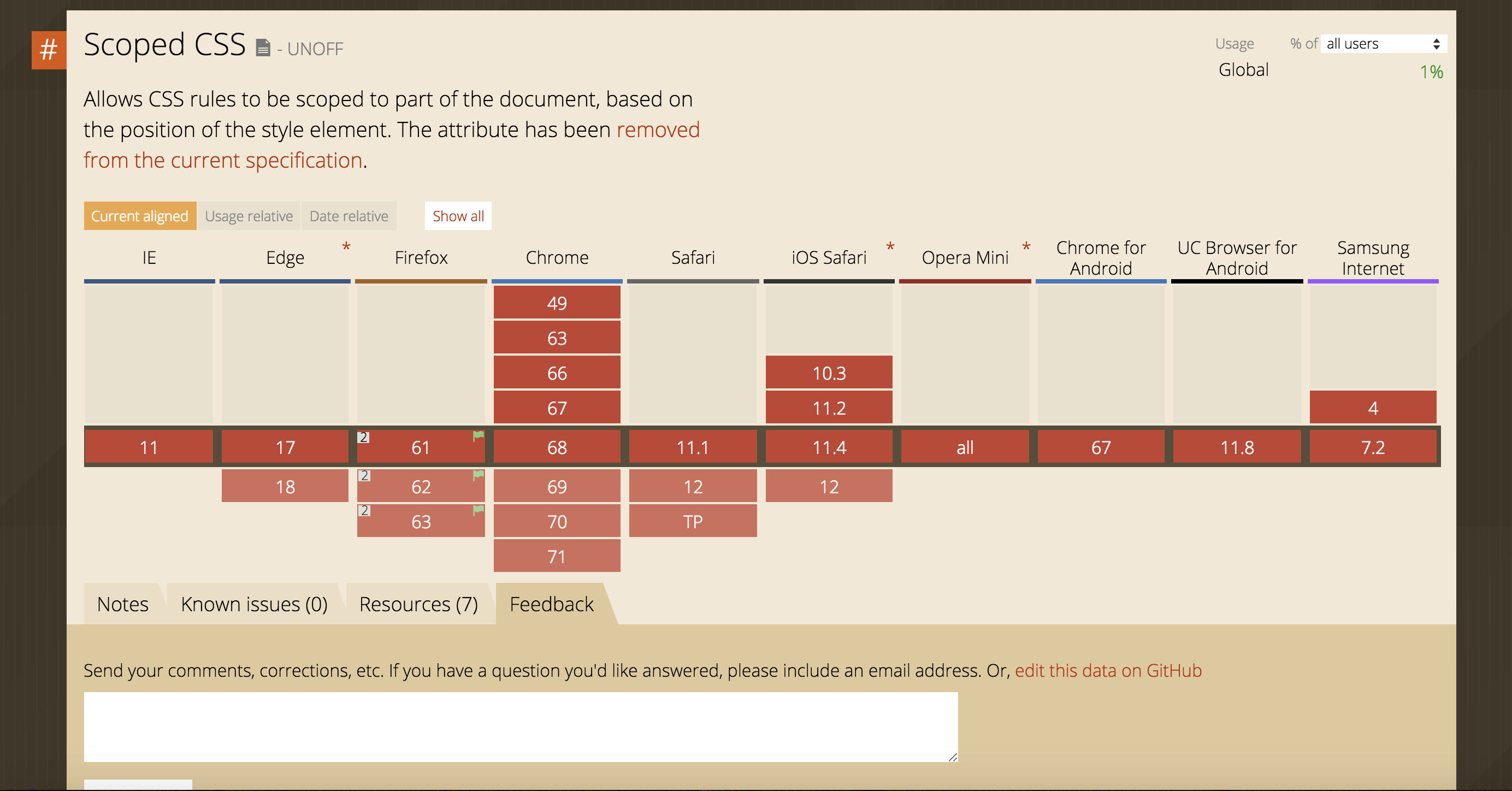<style>的scope属性
这几天做一个忘记密码的功能,vue的项目,因为涉及到弹框组件,所以用vue封装了一个弹框组件,在需要的地方去引入,下面是组件的代码:
1 2 3 4 5 6 7 8 9 10 11 12 13 14 15 16 17 18 19 20 21 22 23 24 25 26 27 28 29 30 31 32 33 34 35 36 37 38 39 40 41 42 43 44 45 46 47 48 49 50 51 52 53 54 55 56 57 58 59 60 61 62 63 64 65 66 67 68 69 70 71 72 73 74 75 76 77 78 79 80 81 82 83 84 85 86 87 88 89 90 91 92 93 94 95 96 97 98 99 100 101 102 103 104 105 106 107 108 109 110 111 112 113 114 115 116 117 118 119 120 121 122 123 124 125 126 127 128 129 130 131 132 133 134 135 136 137 138 139 140 141 142 143 144 145 146 147 148 149 150 151 152 153 154 155 156 157 158 159 160 161 162 163 164 | <!--isShow type : objectkey : 父组件中控制弹框显示和隐藏的属性名value : 父组件中控制弹框显示和隐藏的属性值title type : string 弹框的titletitleImgSrc type : string url 弹框顶部的图片width type : number||string 弹框的宽度 支持百分比closeClickModel : boolean 点击遮罩层是否关闭弹框 默认true 关闭showCloseBtn : boolean 是否显示关闭弹框按钮,默认不显示--><template> <div v-show="isShow.value" class="vkd-dialog-box" @click.self="clickModelClose" > <div class="dialog" :style="style"> <div @click="closeDialog" class="close-btn" v-if="showCloseBtn"></div> <div class="dialog-img" v-show="titleImgSrc"> <img :src="titleImgSrc" alt="title image"> </div> <div class="dialog-content"> <h4 class="dialog-title">{{title}}</h4> <div class="dialog-body"> <slot></slot> </div> <div class="dialog-footer"> <slot name='footer'></slot> </div> </div> </div> </div></template><script> export default { name:'vkd-Dialog', props:{ 'isShow':{ type:Object, default:()=>{ return{ key:'key', value:false } } }, 'title':{ type:String, default:'' }, 'titleImgSrc':{ type:String }, 'width':{ type:[Number,String], default:300 }, 'closeClickModel':{ type:Boolean, default:true }, 'showCloseBtn':{ type:Boolean, default:false } }, methods:{ clickModelClose(){ this.closeClickModel&&(this.$parent[this.isShow.key]=!this.$parent[this.isShow.key]); }, closeDialog(){ this.$parent[this.isShow.key]=!this.$parent[this.isShow.key]; } }, computed:{ style(){ return { width:/^-?\d+%$/.test(this.width)?this.width:this.width+'px' } } } }</script><style lang="scss" scoped> .vkd-dialog-box{ position: absolute; z-index: 10000; width:100%; height:100%; top:0; left:0; background:rgba(0,0,0,0.5); .dialog{ position: fixed; top: 50%; left: 50%; transform: translate(-50%, -50%); background: #fff; width:300px; .close-btn{ width:24px; height:24px; background: url('../assets/closeBtn.png') no-repeat; position: absolute; right:15px; top:15px; cursor: pointer; } .dialog-img{ img{ width: 100%; } } .dialog-content{ padding:12px 30px 30px 30px; text-align: left; .dialog-title{ margin:0; line-height: 26px; font-size: 24px; } .dialog-body{ padding-top:12px; font-size: 14px; color: #767676; line-height:18px; } /*.email-icon{*/ /*display: inline-block;*/ /*margin-right:10px;*/ /*width:15px;*/ /*height:10px;*/ /*background: url("../../assets/img/login/email.png") no-repeat 0 0;*/ /*background-size: 100% 100%;*/ /*}*/ /*.email{*/ /*color:#03a9f4*/ /*}*/ /*.text{*/ /*padding-top:12px;*/ /*line-height:18px;*/ /*color: #767676;*/ /*}*/ .dialog-footer{ margin-top:30px; overflow: hidden; text-align: right; button{ text-align: center; width: 65px; height: 20px; border-radius: 3px; background-color: #fdb62b; color:#fff; border: none; margin-left:10px; font-size:14px; cursor: pointer; } span{ color: #767676; font-size:14px; } } } } }</style> |
在需要的组件中引入弹框组件,然后需要修改一些个性化的样式,比如title的字体颜色,发现无论怎样增加权限都没办法覆盖子组件中的样式,后来发现了问题,因为子组件和父组件的style中都使用了scope属性,浏览器渲染后,给每个组件中的元素增加了自定义属性,如图
而浏览器渲染样式的时是这样的

这也是scoped的工作原理,所以在子组件中写的元素,只有子组件中的自定义属性,而父组件中加的样式,最终浏览器渲染时是找不到对应的元素的,(因为父组件中样式给出的自定义属性是不一致的),所以子组件中.dialog-title的样式没办法在父组件中修改,而.dialog-footer中的button的样式是可以修改的,因为button是写在父组件中,以slot的方式插入在子组件中的,而dialog-title是通过设置props属性传递给子组件的。明白了原因后,对子组件做出了修改

如此,弹框中的header,body,footer都可以愉快地个性化样式了,但是弹框整体的风格还是需要公共组件控制的,这也是公共组件的用处吧。
另外查了下原生的scope属性,已经不支持了,所以现在只能在这些.vue的模版文件中使用,等等

完了,有点啰嗦。




【推荐】编程新体验,更懂你的AI,立即体验豆包MarsCode编程助手
【推荐】凌霞软件回馈社区,博客园 & 1Panel & Halo 联合会员上线
【推荐】抖音旗下AI助手豆包,你的智能百科全书,全免费不限次数
【推荐】轻量又高性能的 SSH 工具 IShell:AI 加持,快人一步
· Brainfly: 用 C# 类型系统构建 Brainfuck 编译器
· 智能桌面机器人:用.NET IoT库控制舵机并多方法播放表情
· Linux glibc自带哈希表的用例及性能测试
· 深入理解 Mybatis 分库分表执行原理
· 如何打造一个高并发系统?
· DeepSeek 全面指南,95% 的人都不知道的9个技巧(建议收藏)
· Tinyfox 发生重大改版
· 对比使用DeepSeek与文新一言,了解DeepSeek的关键技术论文
· Brainfly: 用 C# 类型系统构建 Brainfuck 编译器
· DeepSeekV3+Roo Code,智能编码好助手